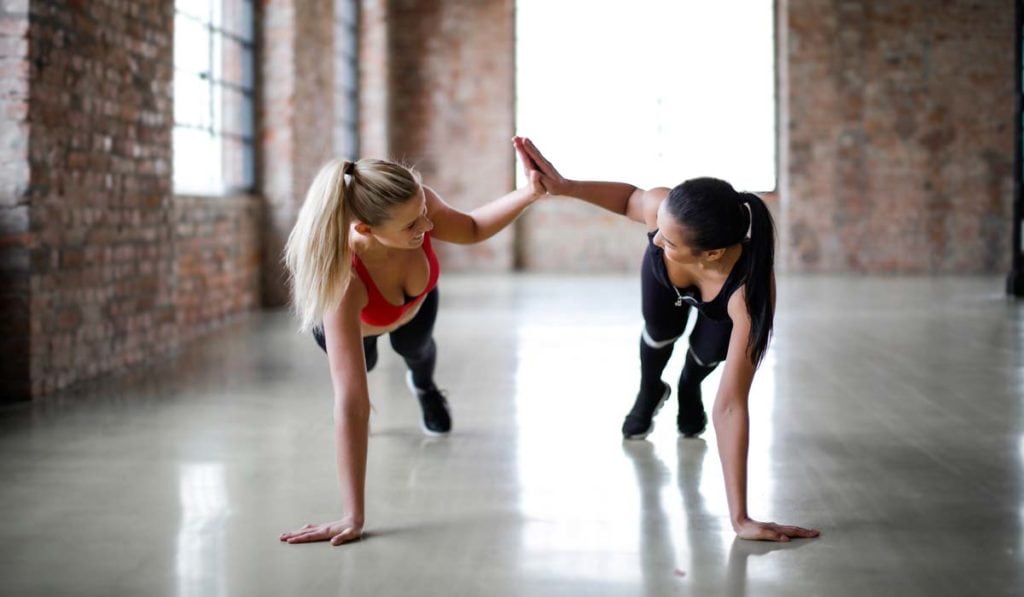
Is Cross-Training Necessary?
Cross-training is a normal part of many athletes’ routines. Sometimes, it’s necessary due to seasonal changes or equipment availability. Other times, it’s a voluntary choice that helps athletes maintain conditioning on rest days or prevent injury. Although it’s not a requirement for athletes, cross-training is essential to maintaining a sustainable, injury-free, and effective training program.
What is cross-training?

Cross-training is the process of engaging in other physical activities that are outside the typical drills and exercises you would normally do. For instance, if you’re a runner, you might cross-train with another type of physical activity like swimming.
Taking a brief break from the usual activities associated with a specific sport allows you to use your muscles, bones, joints, and tendons differently. Essentially, it’s a form of active rest that still maintains conditioning.
Benefits of cross-training for athletes

Cross-training is an excellent way to challenge yourself. It forces your body to adapt by working different muscles or the same muscles, but from a different angle. As a result, a balanced cross-training routine can help you gain additional mobility, flexibility, and strength!
All forms of cross-training are also beneficial for injury prevention because they reduce strength and flexibility imbalances and give your body opportunities to use its muscles in various ways.
And, of course, cross-training is fun! It gives you a mental break from regular physical activities and offers something new, exciting, and different. While getting very excited about doing something new is easy, just remember to maintain proper technique, warmup, and cooldown, and avoid over-exerting yourself. Otherwise, you could develop an injury.
No matter how experienced (or inexperienced) you are at a particular sport, cross-training should be a part of your routine.
What is the best form of cross-training for runners and cyclists?

Any type of cross-training is excellent for runners and cyclists, but these are some of the best options and their primary benefits.
Strength training
Pairing strength training with any cardio activity is a great way to avoid injury and enhance speed and endurance. You can achieve gains with bodyweight exercises or weight lifting. If you’re weight lifting, you may want to consider two different types of training: The first is lifting to build muscle for running or working to increase your lower body strength. The second is lifting to challenge other body parts, such as working on your core, lower back, arms, or other less-worked areas.
Indoor cycling
If you are a runner, indoor cycling is a great way to increase cardio with less impact on your joints. Cycling helps improve your leg and glute strength, pairing nicely with running. It can also improve your mobility while running. Whether you prefer sprints or longer endurance rides, cycling can enhance your cardio fitness.
Learn more about cycling with Vingo here!
Swimming
Swimming is another alternative (low impact) cardio option for indoor running. Swimming is a full-body workout that is easy on the muscles, bones, and joints. It can also help improve your flexibility by stretching out your muscles and strengthening different parts of your body that you wouldn’t normally target while running or cycling.
Yoga
Yoga is an excellent option to balance cardio. Yoga can help improve your core strength and your balance. For those with chronically tight muscles, yoga is also great for stretching out your hips, hamstrings, and quads, all of which often get tight with running.
Yoga also equips you with the tools you need to control your breathing and heart rate and increase mindfulness, all of which are beneficial for running and cycling.
How do I add cross-training to my workout routine?

When you incorporate cross-training into your regular workout routine, you create a more balanced exercise regimen. But how do you manage this logistically?
- First, select your cross-training activities. Pick one or two physical activities you will enjoy adding to your routine. Consider what equipment you have available and your daily schedule to find a good fit for you.
- Aim to work out for a set amount of time each day. Commit a certain number of minutes or hours to your workout routine daily. Whether you have 30 minutes or several hours available each day, just make sure you can be consistent and stick with it. Even if you need to break up your activity into several shorter spurts of 10 or 15 minutes, try to aim for at least 30 minutes of daily activity for optimal health and results.
- Avoid doing the same activity on two consecutive days. Doing the same exercises day after day will put stress on your body and your mental health. Plus, it’s not as enjoyable to do the same thing all the time. Instead, vary your daily activities as much as possible. For instance, if running is your primary form of physical activity, aim to run on Mondays, Wednesdays, and Fridays and cross-train with a different activity on Tuesdays and Thursdays. Take a rest day on Sundays.
- Start slowly. Rushing into any training routine too quickly can backfire and result in injuries or burnout. To avoid these common issues, start slowly and steadily increase the time you spend working out or the intensity of your sessions. Your body will thank you!
If you haven’t been active in a while or have any concerns about incorporating certain cross-training activities, talk with your doctor or work with a trainer. They can help you establish a balanced and healthy training routine that will yield results without putting you at risk for injury.
How often should I cross-train?

Cross-training once or twice a week is a good goal. Remember, cross-training should enhance your regular workout routine, not detract from it! Avoid overdoing it and maintain a moderate intensity level during your cross-training sessions. Pushing yourself too hard could lead to injury or burnout, which will make it difficult for you to progress.








